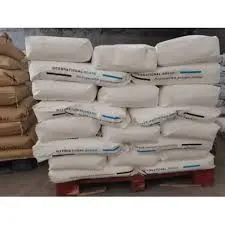
දෙසැ. . 02, 2024 00:11 Back to list
Potential Side Effects of Hydroxypropyl Methyl Cellulose in Various Uses
Hydroxypropyl Methyl Cellulose Understanding Potential Side Effects
Hydroxypropyl methyl cellulose (HPMC) is a non-ionic, water-soluble polymer derived from cellulose. It is widely used in various industries, including pharmaceuticals, food production, cosmetics, and construction, due to its gelling, thickening, and film-forming properties. While HPMC is generally regarded as safe, it is crucial to understand potential side effects and whether it may impact individual health or well-being.
What is Hydroxypropyl Methyl Cellulose?
HPMC is produced through the chemical modification of cellulose, a natural polymer found in the cell walls of plants. By combining cellulose with propylene oxide and methyl chloride, HPMC is formed, creating a compound that dissolves in water and possesses a range of functional properties suitable for multiple applications.
In pharmaceuticals, HPMC is commonly used as an excipient in tablets and as a controlled-release agent. It serves to improve the texture and stability of medications. In the food industry, HPMC is used as a thickening agent and stabilizer, while in cosmetics, it acts as a binding agent in various formulations.
Common Uses of HPMC
- Pharmaceuticals Serves as a binder, film former, and controlled-release agent in tablet formulations. - Food Products Used as a thickener, stabilizer, and emulsifier in gluten-free products and sauces. - Cosmetics Acts as a binder in creams, lotions, and gels. - Construction Utilized in tile adhesives, plasters, and paints to enhance workability and performance.
Potential Side Effects of Hydroxypropyl Methyl Cellulose
Though HPMC is considered safe for most people, some individuals may experience side effects. The following are potential issues associated with its use
hydroxypropyl methyl cellulose side effects

1. Allergic Reactions Although rare, some individuals may be allergic to HPMC. Symptoms of an allergic reaction may include skin rashes, itching, or respiratory issues. People with known sensitivities to cellulose derivatives should avoid products containing HPMC.
2. Gastrointestinal Disturbances As HPMC is sometimes used as a bulking agent, it may cause digestive issues for some individuals. These can include bloating, gas, or diarrhea, especially if consumed in large amounts. It is essential to introduce HPMC-containing foods or supplements gradually to minimize the risk of gastrointestinal discomfort.
3. Eye Irritation In cosmetic applications, particularly when used in eye medications or contact lens solutions, HPMC may cause mild eye irritation in some users. Individuals may experience redness, burning, or discomfort. It is advised to follow usage directions carefully and consult with a healthcare professional if irritation persists.
4. Interactions with Medications HPMC can affect the absorption of some oral medications by altering the viscosity of gastrointestinal contents or delaying gastric emptying. This might influence the effectiveness of certain drugs, particularly those with narrow therapeutic indices. Patients on specific medications should consult their healthcare provider when considering HPMC-containing products.
5. Fluid Retention In some cases, due to its water-holding capabilities, excessive ingestion of HPMC could lead to fluid retention, particularly in susceptible individuals. Those with underlying health conditions that affect fluid balance should be cautious.
Conclusion
Hydroxypropyl methyl cellulose is a versatile polymer commonly used across various industries. While it is largely safe and well-tolerated, potential side effects do exist, including allergic reactions, gastrointestinal disturbances, eye irritation, possible medication interactions, and fluid retention.
Individuals considering the use of HPMC in food, pharmaceuticals, or cosmetics should take note of these potential side effects, particularly if they have pre-existing health conditions or sensitivities. Consulting with healthcare professionals can provide personalized advice and guidance, ensuring safe usage tailored to individual needs.
As research and testing continue, our understanding of the safety profile and potential effects of hydroxypropyl methyl cellulose will surely expand, further ensuring its safe use across various applications.
-
Unlocking the Benefits of HPMC Products: A Gateway to Versatile Applications
NewsAug.07,2025
-
Unleashing the Potential of HPMC Ashland: A Comprehensive Look
NewsAug.07,2025
-
Tile Bonding Cellulose: The Key to Superior Adhesion and Durability
NewsAug.07,2025
-
Hydroxypropyl Methylcellulose Powder: The Versatile Component in Modern Pharmaceuticals
NewsAug.07,2025
-
Hydroxyethyl Cellulose: The Versatile Solution for Various Industries
NewsAug.07,2025
-
Hydroxyethyl Cellulose (HEC): The Versatile Polymer for Various Applications
NewsAug.07,2025







